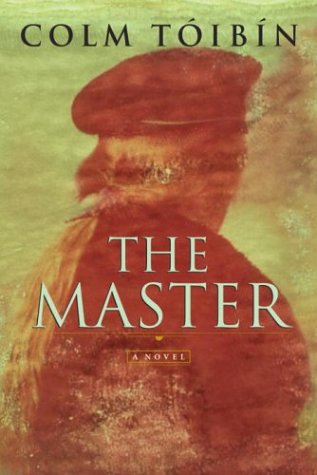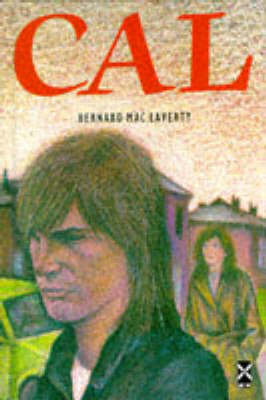Author Photo And Bio
 1. The Transit of Venus by Shirley Hazzard (1980). Like planets moving across the sky —always the same yet always changing —this sumptuously written novel follows the lives of two orphaned sisters who leave Australia in the 1950s to begin new lives in England. While Grace turns to marriage for a safe transit through life, Caro charts a riskier course, one that brings her love and betrayal over the decades.
1. The Transit of Venus by Shirley Hazzard (1980). Like planets moving across the sky —always the same yet always changing —this sumptuously written novel follows the lives of two orphaned sisters who leave Australia in the 1950s to begin new lives in England. While Grace turns to marriage for a safe transit through life, Caro charts a riskier course, one that brings her love and betrayal over the decades.
 2. The Line of Beauty by Alan Hollinghurst (2004). Nick Guest is a young gay man desperate for love, the son of a modest antiques dealer who wants to climb the social ladder. In gorgeous, closely observed prose reminiscent of Henry James, much of this Booker Prize–winning novel chronicles Nick’s amorous and social ascents in the drug-and sex-fueled world of 1980s England. Then comes AIDS and the cold, hard punch of Margaret Thatcher’s policies, which leave everyone on their own, including Nick.
2. The Line of Beauty by Alan Hollinghurst (2004). Nick Guest is a young gay man desperate for love, the son of a modest antiques dealer who wants to climb the social ladder. In gorgeous, closely observed prose reminiscent of Henry James, much of this Booker Prize–winning novel chronicles Nick’s amorous and social ascents in the drug-and sex-fueled world of 1980s England. Then comes AIDS and the cold, hard punch of Margaret Thatcher’s policies, which leave everyone on their own, including Nick.
 3. The Scarlet Letter by Nathaniel Hawthorne (1850). Hester Prynne is a sinner in the hands of seventeenth-century Puritans. Forced to wear the letter “A” for adultery, she is publicly disgraced and shunned. Despite her condemnation, Hester refuses to reveal the identity of her lover. Her husband, Roger Chilling worth, returns unexpectedly and seeks revenge. Chillingworth is a torment to the guilt-stricken minister, Arthur Dimmesdale, as is Pearl, the child born of Hester and Dimmesdale’s adultery. Ultimately, it is the fallen lovers, not the Puritans, who come to understand the nature of sin and redemption.
3. The Scarlet Letter by Nathaniel Hawthorne (1850). Hester Prynne is a sinner in the hands of seventeenth-century Puritans. Forced to wear the letter “A” for adultery, she is publicly disgraced and shunned. Despite her condemnation, Hester refuses to reveal the identity of her lover. Her husband, Roger Chilling worth, returns unexpectedly and seeks revenge. Chillingworth is a torment to the guilt-stricken minister, Arthur Dimmesdale, as is Pearl, the child born of Hester and Dimmesdale’s adultery. Ultimately, it is the fallen lovers, not the Puritans, who come to understand the nature of sin and redemption.
 4. The Hours by Michael Cunningham (1998). This Pulitzer Prize–winning novel describes three women whose lives resonate with Virginia Woolf’s novel Mrs. Dalloway. There is Woolf herself, contemplating suicide even as she imagines her great novel; an American housewife in 1949 who can’t quite fathom her discontent; and a contemporary woman, a lesbian in a long-term relationship, whose great love, a man, is dying of AIDS. Melancholy, hope, and endurance suffuse this intimate novel that suggests, “There’s just this for consolation: an hour here or there when our lives seem, against all odds and expectations, to burst open and give us everything we’ve ever imagined. . . . [Still] we hope, more than anything, for more.”
4. The Hours by Michael Cunningham (1998). This Pulitzer Prize–winning novel describes three women whose lives resonate with Virginia Woolf’s novel Mrs. Dalloway. There is Woolf herself, contemplating suicide even as she imagines her great novel; an American housewife in 1949 who can’t quite fathom her discontent; and a contemporary woman, a lesbian in a long-term relationship, whose great love, a man, is dying of AIDS. Melancholy, hope, and endurance suffuse this intimate novel that suggests, “There’s just this for consolation: an hour here or there when our lives seem, against all odds and expectations, to burst open and give us everything we’ve ever imagined. . . . [Still] we hope, more than anything, for more.”
 5. The Untouchable by John Banville (1997). Loosely based on the life of Cambridge spy Anthony F. Blunt, the novel opens in 1979, when seventy-two-year-old Vic Maskell’s crimes have been publicly exposed. As the world recognizes that this art curator was not who he seemed, Vic probes his past —vividly bringing to life his co-conspirators and the city of Cambridge —to determine his accuser’s identity. This suspenseful, philosophical journey reveals the fractured state of Vic’s identity: Irishman and Englishman, lover of women and men, betrayer and betrayed.
5. The Untouchable by John Banville (1997). Loosely based on the life of Cambridge spy Anthony F. Blunt, the novel opens in 1979, when seventy-two-year-old Vic Maskell’s crimes have been publicly exposed. As the world recognizes that this art curator was not who he seemed, Vic probes his past —vividly bringing to life his co-conspirators and the city of Cambridge —to determine his accuser’s identity. This suspenseful, philosophical journey reveals the fractured state of Vic’s identity: Irishman and Englishman, lover of women and men, betrayer and betrayed.
 6. The Master by Colm Tóibín (2004). In beautiful, perceptive prose suggestive of its subject, this novel brings readers inside the conflicted mind and soul of Henry James. Set between 1895 and 1899, when a mid-career James was reassessing his life, the novel flows with memories of his youth and accomplished family members. What emerges is the portrait of a man determined to avoid complications —especially those posed by homosexuality; who wrestles with his need to turn his life into art, and his desire to push away life so he can create his art.
6. The Master by Colm Tóibín (2004). In beautiful, perceptive prose suggestive of its subject, this novel brings readers inside the conflicted mind and soul of Henry James. Set between 1895 and 1899, when a mid-career James was reassessing his life, the novel flows with memories of his youth and accomplished family members. What emerges is the portrait of a man determined to avoid complications —especially those posed by homosexuality; who wrestles with his need to turn his life into art, and his desire to push away life so he can create his art.
 7. Don’t Let’s Go to the Dogs Tonight by Alexandra Fuller (2001). When Fuller was a toddler in 1972, her loving, resilient, no-nonsense parents moved their family from England to Rhodesia (now Zimbabwe) just as the indigenous peoples were rising up against their colonial rulers. This affectionate but unflinching memoir recounts the hardships and violence her family endured while farming in this poor land —three of her four siblings perished there —as well as the racism that infected her family and the segregation that strangled her community.
7. Don’t Let’s Go to the Dogs Tonight by Alexandra Fuller (2001). When Fuller was a toddler in 1972, her loving, resilient, no-nonsense parents moved their family from England to Rhodesia (now Zimbabwe) just as the indigenous peoples were rising up against their colonial rulers. This affectionate but unflinching memoir recounts the hardships and violence her family endured while farming in this poor land —three of her four siblings perished there —as well as the racism that infected her family and the segregation that strangled her community.
 8. Lies of Silence by Brian Moore (1990). A failed Irish poet who loathes his country decides to run away with his mistress to London. But then IRA terrorists snatch his shrewish wife, threatening to kill her unless he parks an explosive-laden car outside a hotel where a Protestant minister will be speaking. That is only the first moral vise that squeezes him in this fast-paced, philosophical thriller.
8. Lies of Silence by Brian Moore (1990). A failed Irish poet who loathes his country decides to run away with his mistress to London. But then IRA terrorists snatch his shrewish wife, threatening to kill her unless he parks an explosive-laden car outside a hotel where a Protestant minister will be speaking. That is only the first moral vise that squeezes him in this fast-paced, philosophical thriller.
 9. Cal by Bernard MacLaverty (1983). Cal is a young Catholic trapped by the violence strangling Northern Ireland. With other members of the Irish Republican Army, he helps murder a Protestant policeman. Life takes a turn when he falls in love, and then offers a cruel twist when he learns that she is his victim’s daughter. Ultimately, though, love offers a glimpse of life apart from sectarian violence and a path to redemption.
9. Cal by Bernard MacLaverty (1983). Cal is a young Catholic trapped by the violence strangling Northern Ireland. With other members of the Irish Republican Army, he helps murder a Protestant policeman. Life takes a turn when he falls in love, and then offers a cruel twist when he learns that she is his victim’s daughter. Ultimately, though, love offers a glimpse of life apart from sectarian violence and a path to redemption.
 10. That Night by Alice McDermott (1987). Primal emotions surge beneath the veneer of 1960s suburban placidity in McDermott’s searing tale of innocence lost. With her teased hair and elaborate makeup, teenage Sheryl epitomizes glamour. But after her father dies, Sheryl becomes pregnant and is sent away, precipitating a violent confrontation between the neighborhood men and Sheryl’s aggrieved boy friend. McDermott’s exquisite and haunting rendering of the painful revelations of youth and the mysteries of death and sex is mythic in its resonance.
10. That Night by Alice McDermott (1987). Primal emotions surge beneath the veneer of 1960s suburban placidity in McDermott’s searing tale of innocence lost. With her teased hair and elaborate makeup, teenage Sheryl epitomizes glamour. But after her father dies, Sheryl becomes pregnant and is sent away, precipitating a violent confrontation between the neighborhood men and Sheryl’s aggrieved boy friend. McDermott’s exquisite and haunting rendering of the painful revelations of youth and the mysteries of death and sex is mythic in its resonance.